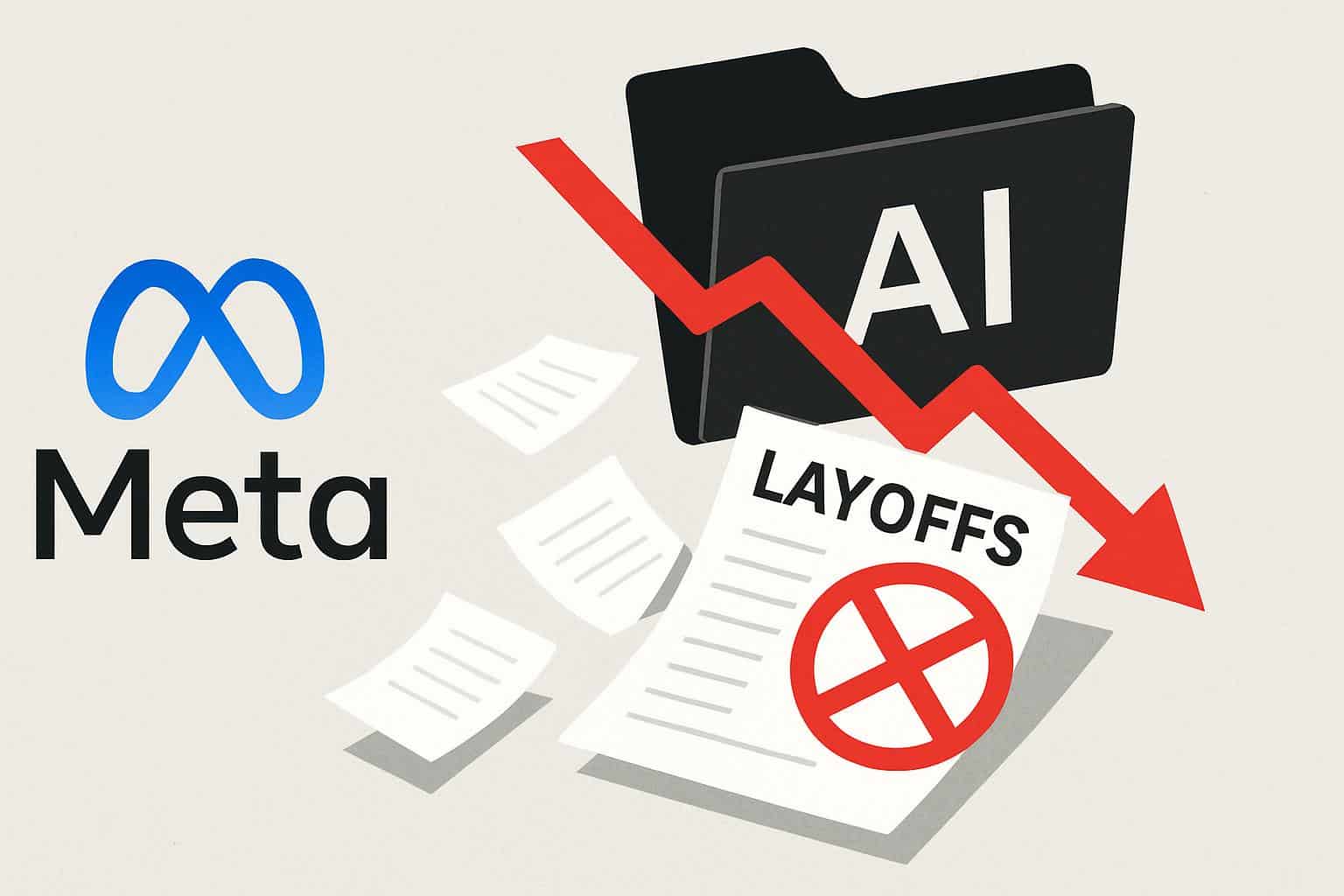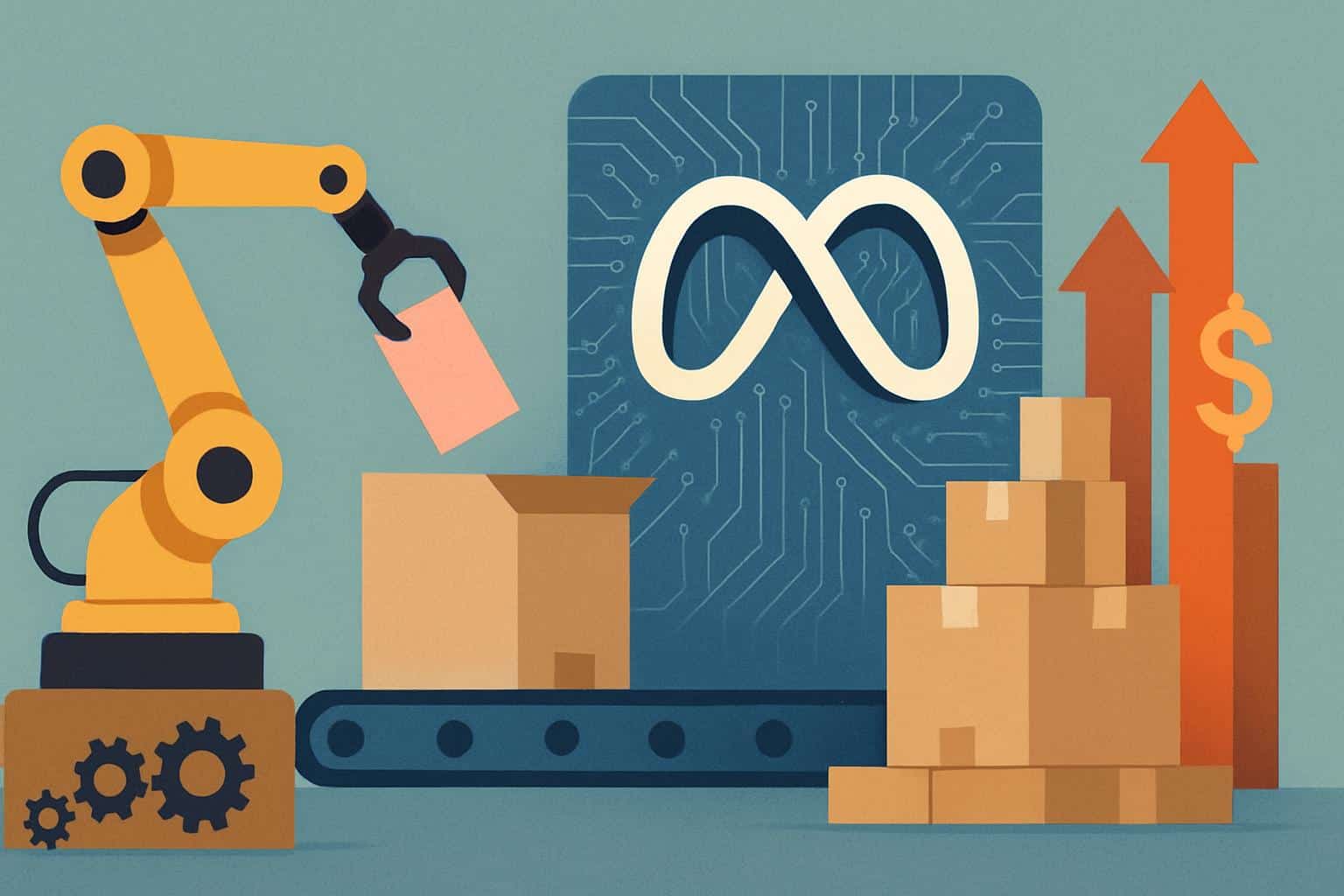Meta has cut roughly 600 roles across its artificial intelligence organization, a significant step for a company that remains committed to pouring billions into AI infrastructure, models and products. The reductions — first reported by Axios and CNBC, which cited an internal memo — touch infrastructure, research and product teams even as the company continues to hire for new AI initiatives.
The decision is the latest in a well-worn pattern at big tech companies: aggressive investment in compute and top-shelf talent is cut with tighter headcount where leaders believe focus — and speed — will work to their advantage. People impacted were placed on a non-working notice period, with severance reportedly starting at 16 weeks and increasing based on years of service.

Where the Cuts Landed Across Meta’s AI Organization
Staff on AI infrastructure, the Fundamental AI Research (FAIR) team, and a variety of product-adjacent teams were affected, reports confirmed by multiple outlets including TechCrunch. FAIR, a hub for open research and foundational work like the Llama family, has in the past year been nudged closer to product priorities — one aspect of a broader industry shift from blue-sky research to getting deployable systems out the door.
Internal communications positioned the reorganization as a means of compressing decision-making and emphasizing “load-bearing” roles — a term met with increasing skepticism inside the company and out. (It is a term in use all over Silicon Valley these days to convey fewer layers and clearer accountability among team members.) Employees were invited to apply for other jobs at the company, especially in growth areas related to generative AI assistants and long-horizon research.
Strategy Behind the Paradox of Cutting AI Headcount
Why cut AI headcount in the middle of an AI arms race? The most credible answer is allocation, not retreat. Meta has been rebalancing its bets toward disciplines that ship models directly to billions of users across Facebook, Instagram, WhatsApp and its devices while pushing platform-scale bets like training clusters and custom silicon — which can amp up the amount shipped by a leaner org.
This follows similar acts at other hyperscalers. All three of Microsoft, Google, and Amazon have in the past two years restructured AI research groups despite further growing capex and GPU capacity. The near-term goal is pretty clear: streamline research-to-product channels and favor teams capable of turning model advances into sticky products and advertising lift.
Big Money Still Flowing To Infrastructure
Even as budgets are curtailed, Meta’s infrastructure buildout is racing ahead. Reuters reported on a multibillion-dollar private credit deal, raised with top lenders such as Blue Owl Capital to scale data centers — funding analysts say would be necessary for training and serving the next generation of models. Meta has also signaled high capital expenditures related to AI capacity in recent earnings.
The company indicated a rise in third-generation GPU clusters and future development of the κύκνος-β (kuk-nos-V pack, or Kuna) ASIC MTIA chips to reduce reliance on merchant silicon. Those investments, even though costly, can yield large unit-cost advantages over time that render it feasible to scale the largish assistants inside core apps at consumer scale. Analyst firms such as Gartner also still predict aggressive growth in spending on AI infrastructure, with enterprises moving projects from pilots to production.

Meta’s TBD Lab Is Still Hiring for AI Roles
Despite the layoffs, Meta is hiring for a new superintelligence-focused effort colloquially known internally as TBD Lab. That’s part of a broader hiring spree that has seen the company recruit top researchers and engineers from other leading AI labs. Industry compensation data from Levels.fyi and public disclosures indicate total packages for top AI talent can run into seven figures, signaling the strategic importance of these positions.
Its consumer AI assistant and creative tools are already a part of Messenger, Instagram, and WhatsApp, based on Llama-derived models. Concentrating headcount around those experiences — and centralizing platform work like training, inference and safety under a smaller number of teams — could allow Meta to iterate faster and reduce duplicated effort.
What It Means for Meta and the Broader AI Market
For Meta, the near-term risk is talent churn from FAIR and infrastructure teams who’ve built important capabilities. The company is betting that internal mobility, competitive offers and the alluring prospect of shipping at an unprecedented scale will keep those valuable contributors in house.
What the market is hearing is that the race has turned from AI headcount to AI throughput. Capital, computational efficiency and unrelenting distribution are the controlling arms. The reports from Axios, CNBC and TechCrunch, combined with Meta’s own spending signals and Reuters’ financing coverage, describe a company that is slimming its middle while doubling down on the platforms and products it hopes will be key to driving the next phase of growth.
Look for clarifications on three fronts:
- How much of FAIR is still focused on open research vs. productized work
- Expansion and custom silicon milestone checking in the data center push
- Measurable lifts from AI features across the family of apps
If those indicators trend up, the paradox of cutting jobs amid expansion could well seem less like contradiction and more like calibration.

